
Federico García Lorca literary route

Federico García Lorca, poet and playwright assigned to the Generation of 27 is one of the most universal Spanish poets of the 20th century. Jaén has proven to be transcendental for Lorca’s literary production, both because of the direction he took, enhancing his vocation as a writer, and because of the work he developed towards a closed and furious aesthetic.
Federico García Lorca’s link with the province of Jaén began with study trips to different regions of Spain that he carried out in the company of the Professor of the University of Granada, Martín Domínguez Berrueta and his colleagues from the Faculty of Philosophy and Letters, who took them to Úbeda and Baeza in 1916 and again to Baeza in 1917. The study trip to the town of Baeza, where he met Antonio Machado – already a professor of French language at the General and Technical Institute – was crucial to awakening his vocation. as a writer, since in his adolescence the young Lorca felt more affinity for music than for writing.
These visits will produce the texts Impressions of the trip II. Baeza: The City, published in 1917 in the Granada magazine Letras. These texts would later be reworked in his first book Impressions and landscapes (1918) with the title Lost City. An interesting description of Baeza from the beginning of the century that responds to the “impressions” caused by his visit to the city and that we invite you to discover through his literary route.
These student transfers will not be the only ones that Federico García Lorca made to the province, but in 1925 he visited the city of Jaén several times in the company of some friends. The stays in the capital were not anecdotal, but they left a transcendental mark both in his turn towards literature to the detriment of music, and in the deepening of his theory of Andalusia.
Visit the capital of Jaén and discover the places where Federico García Lorca traveled with his friends!
Length of the route
2 kilómeters
Estimated duration
4 hours
Type of route
On foot
PLACES THAT MAKE UP THE ROUTE

Jaén´s landscape
The encounter with the landscape of Jaén and its people surprised the young Lorca, accustomed to the flat fertility of the gardens and plains of Granada. Undoubtedly, this landscape clearly influenced him during his long peri-urban walks along the Cerro del Alcázar, on the remains of the old wall. A place that Machado also frequented assiduously. The display offered by the skyline of “blue mountains, in which the towns shine their diamond whiteness of faded light”, in clear reference to the Aznaitín and Mágina massifs, will leave a mark on his work, as explained below: LOST CITY (BAEZA) I Baeza…
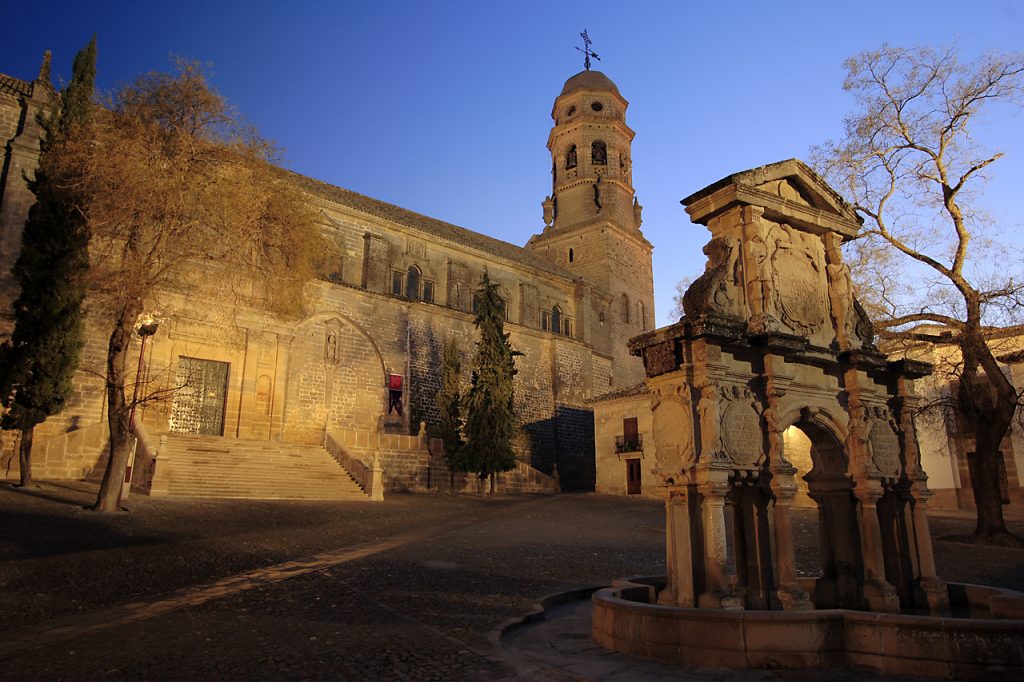
Cathedral, Square and Fountain of Santa María
The space that makes up the Cathedral of Baeza, the square and the fountain of Santa María are main elements in Federico García Lorca’s description of the city in Lost City (“Ciudad Perdida”). Plaza de Santa María is the one that contains part of the main buildings of interest such as the Cathedral itself, the Palace of Jabalquinto or the old Town Hall. LOST CITY (BAEZA) I Baeza (…) This square, an impressive romantic expression where antiquity displays its ancestry of melancholy, a place of retreat, of peace, of manly sadness, was planned to be desecrated when I visited Baeza.…
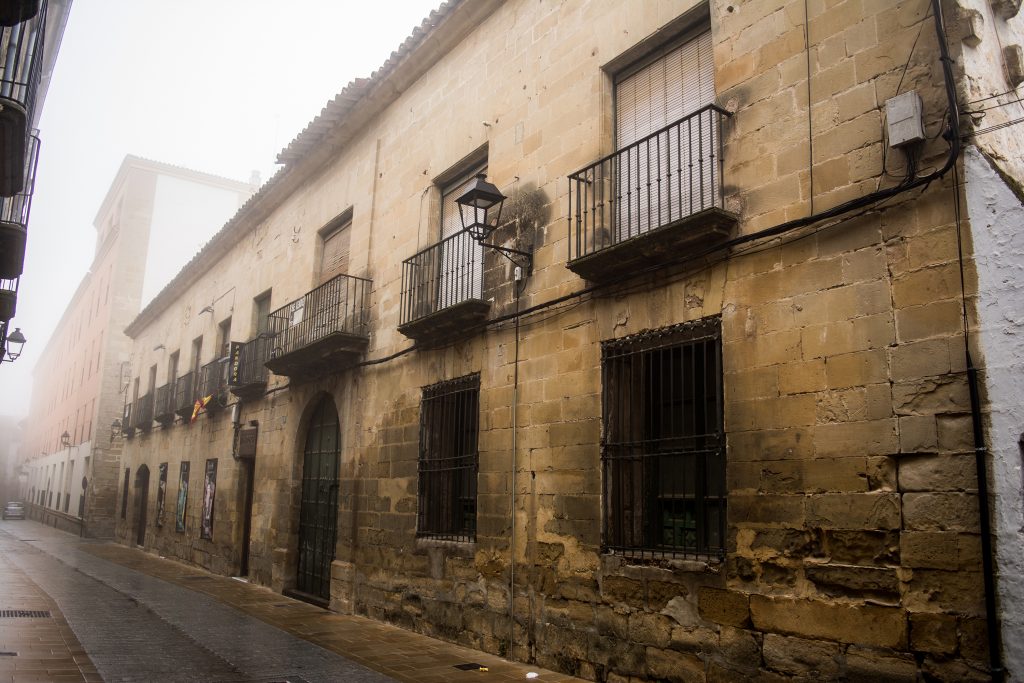
Old artisan Casino
Undoubtedly, one of the places with the greatest literary impact in Lorca’s life. This is where his encounter with Machado occurred, when he was still more a musician than a writer. This event would mark his artistic orientation towards letters and will make him one of the most universal poets in our literature. On June 8, 1916, a soiree was organized, in which Machado recited verses by Rubén Darío – who had died months before – and fragments of La Tierra de Alvargonzález for the travelers, while Lorca played Andalusian pieces on the piano such as the Danza de la…
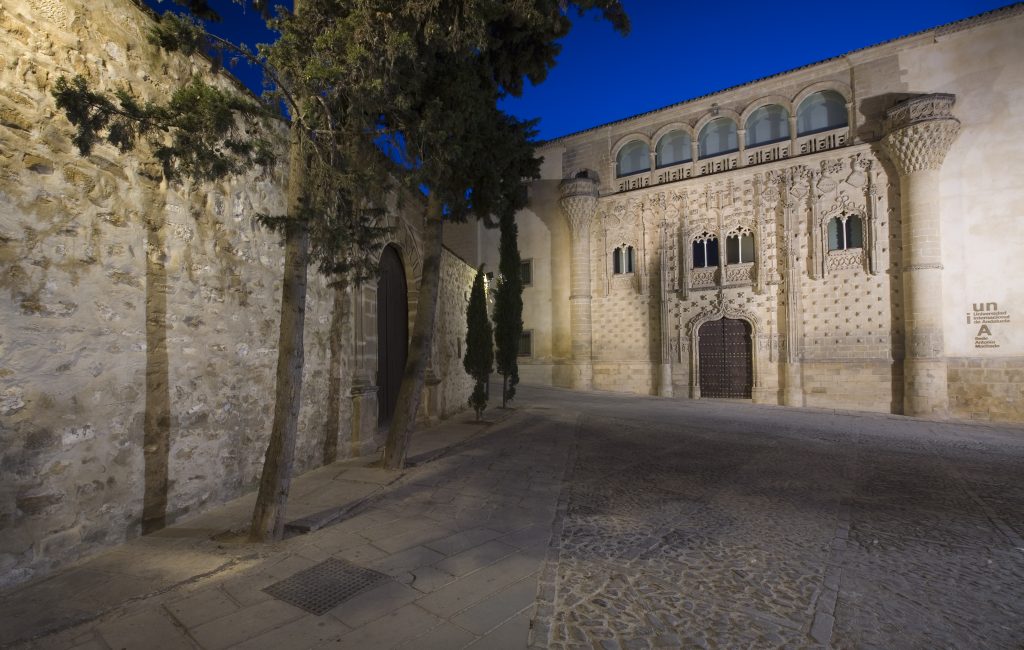
Jabalquinto palace
The Jabalquinto Palace belongs to the interesting Lorca itinerary because it was one of the spaces visited by Federico García Lorca in Baeza, as specified by Rafael Laínez Alcalá, Machado’s student at the General and Technical Institute: “(…) I saw a group of strangers accompanied by the archpriest of the Baezana cathedral (…) who were contemplating the façade of the Seminary, the old palace of Jabalquinto (…) Among the boys (…) Federico García Lorca, whom a few years later I would meet in Madrid. (…) ” At that time, the Palace belonged to the Seminary of San Felipe Neri, where…
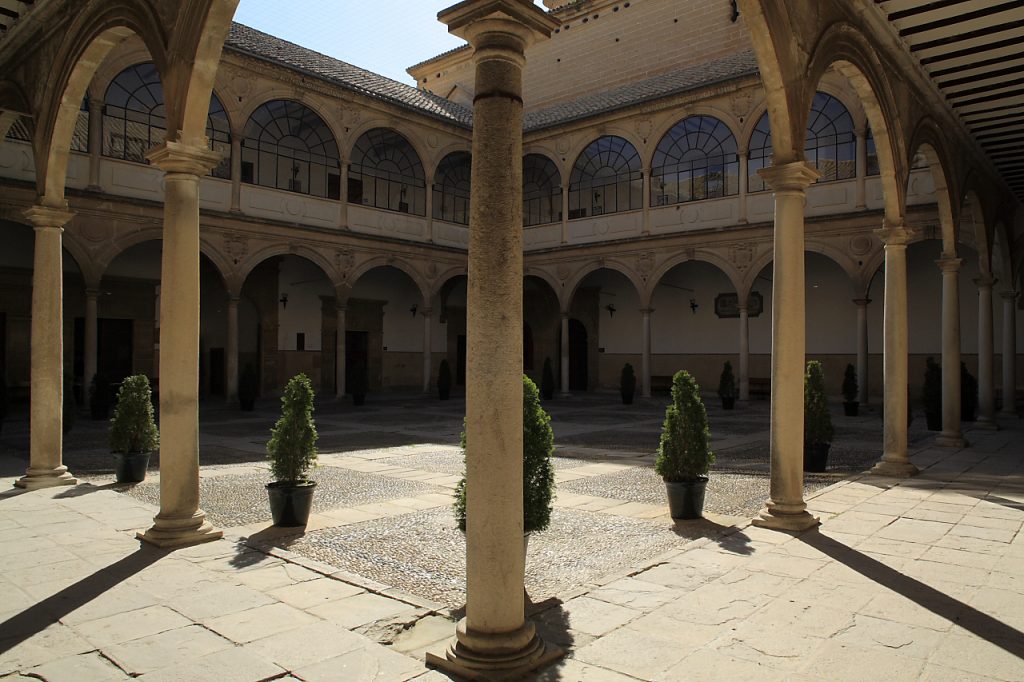
«Santísima Trinidad» Institute of Baeza
The “Santísima Trinidad” Institute of Baeza is where Machado takes possession of the French language chair, then called the General and Technical Institute. The institute belongs to the Lorca itinerary because it was an obligatory meeting point on Martín Domínguez Berrueta’s study trips to Baeza, as evidenced by photographs by the professor of Theory of Arts and Literature at the University of Granada. Leopoldo Urquía, director of the institute with his daughter Paquita, whose sister Lorca dedicates Ciudad Perdida to, also appears in some of them. Thus, the young Lorca visited the Institute on his study trips. The Institute, which…

Plaza del Pópulo / Plaza de los Leones( The Lions Square)
As with the Plaza de Santa María, Federico García Lorca describes the Plaza del Pópulo or de los Leones in an admired and somber way, lamenting the abandonment in which it is found. LOST CITY (BAEZA) I Baeza (…) In a serene square, which has an elegant but mutilated and shattered little palace, a graceful altar with rag flowers next to the aristocratic seriousness of a triumphal arch with a warrior’s air, and a fountain with lions blurred in the stone ( …) The Plaza del Populo was one of the most important squares in Baeza, which housed the main…
Length of the route
2 kilómeters
Estimated duration
3 hours
Type of route
On foot
PLACES THAT MAKE UP THE ROUTE
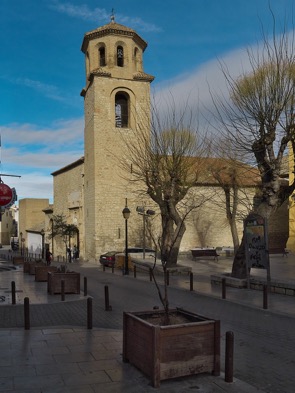
La Magdalena church
On November 24, 1925, Federico García Lorca dated another collective postcard, from a second trip of the poet after the one that occurred at the beginning of November and showing his interest in the city, which left him a pleasant memory. In this new visit, where Lorca acted as Guide, he was accompanied by José Segura Soriano, Alfonso García Valdecasas, Miguel Pizarro Zambrano and Adelina Bello. From this brave city where I came by car, your friends hug you and greet you. I look forward to your letter. Tell me what you think of the gentleman Paquito. Goodbye. Frederick. This…

Plaza de Santa María (Cathedral of Jaén)
The above is not the only postcard in which Lorca refers to Jaén. In a postcard dated in Granada on November 7, 1925, once he had returned from his trip to Jaén and also addressed to his friend Melchor Fernández Almagro, the poet makes reference to various places and icons from Granada. Lorca exchanges the texts on the postcard with his friends and in it he reviews such identifying landmarks of Jaén as the Cathedral, the Plaza de Santa María or the relics of the Holy Face. Below is part of the text of the aforementioned postcard: (…) “Mac Donald…
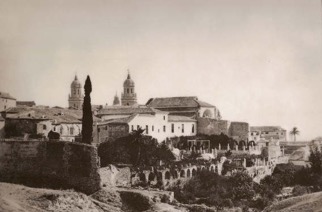
Aqueduct of Carmen and path of the Orchards
On November 2, 1925, García Lorca dated a postcard with the image of the Aqueduct of Carmen and the Senda de los Huertos, very close to the address he uses as his residence, on Carrera de Jesús Street. In this postcard, addressed to his friend Melchor Fernández Almagro, who lived in Madrid, he recommends his visit to Jaén: “I’m sure you would find the character of this landscape magnificent.” Senda de los Huertos was one of the city’s scenic heritages until it was urbanized, in the years sixties of the 20th century. This area, steeped in history (Roman and Muslim…
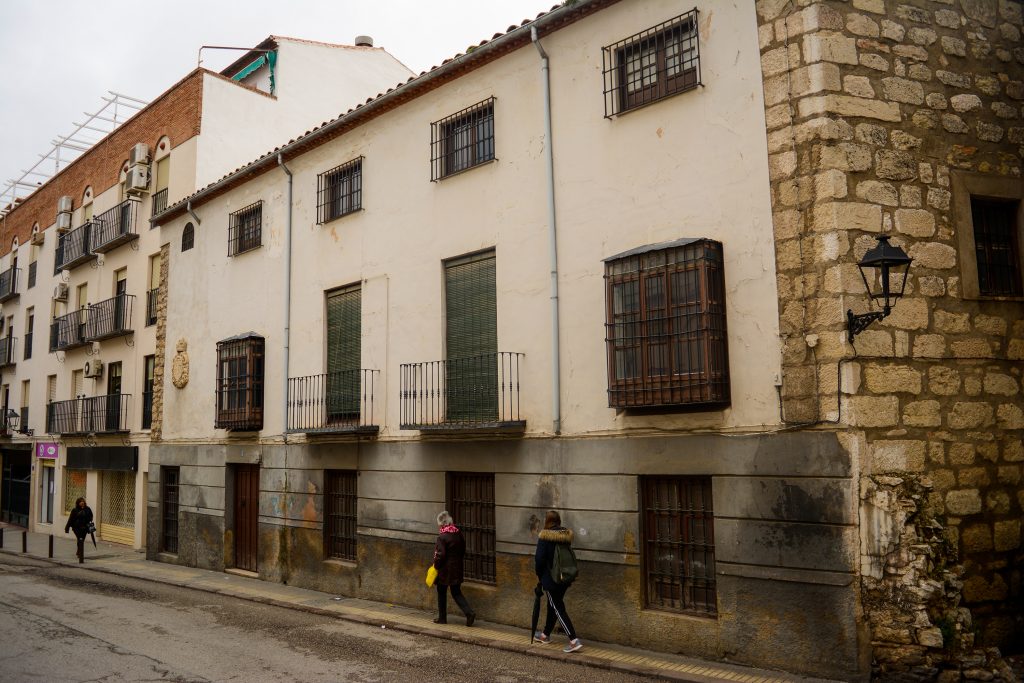
Carrera de Jesús street house
On his trip to Jaén, Federico García Lorca stayed at the house of Don Manuel Montero Sola on Carrera de Jesús Street. The building consists of three floors with a lateral façade of exposed stone, while on the main façade there are two central balconies flanked by two viewpoints with bars and a noble coat of arms on one side. The Aqueduct of Carmen was in its back gardens.